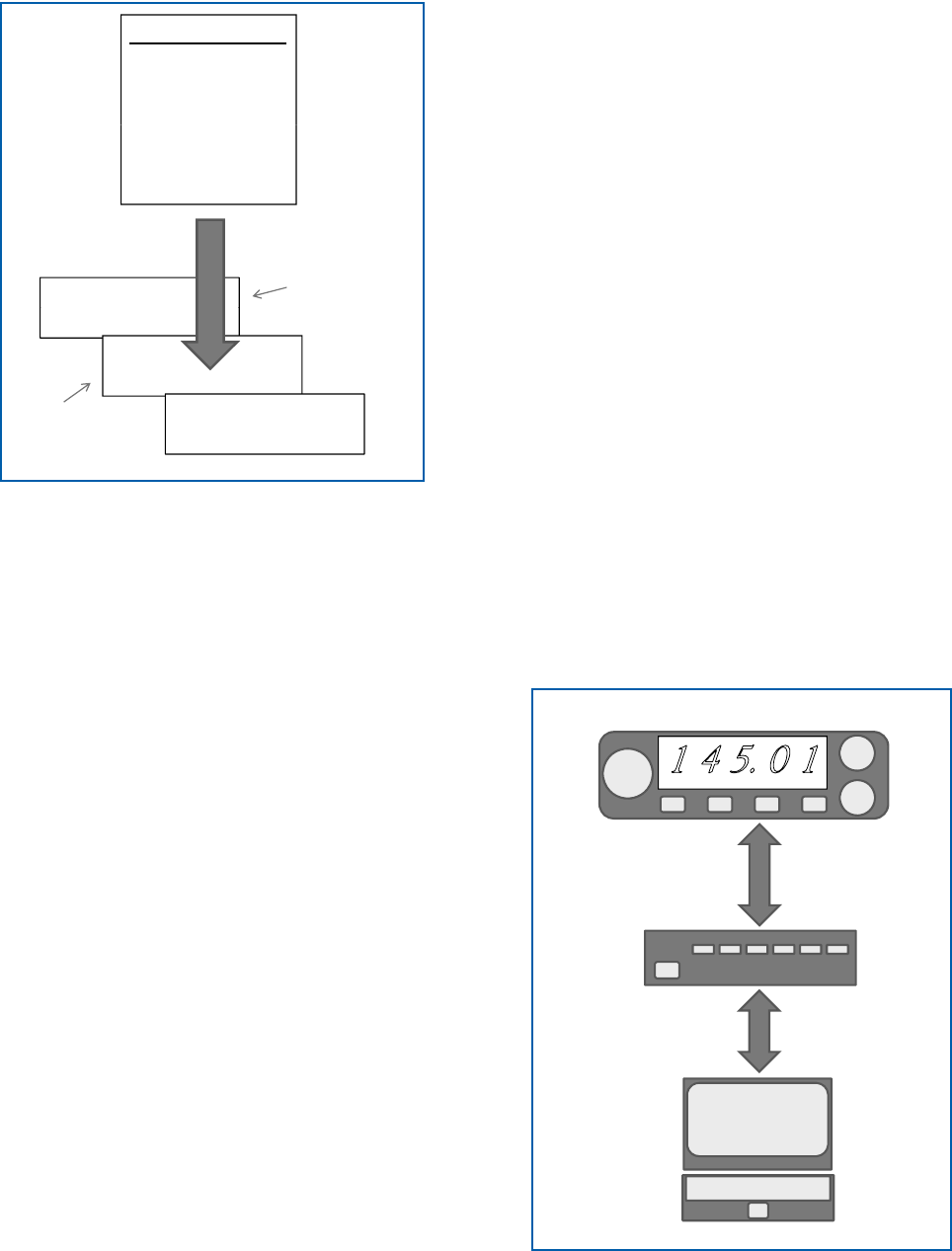Operating instructions

Choosing a Ham Radio 11
special interface called a terminal node controller (TNC),
and a computer as shown in Figure 6. Some radios have
TNCs built in.
Packet provides “keyboard-to-keyboard” communica-
tion a bit like instant messaging. It is also used to send
email from your computer via Winlink system mailboxes.
The Automatic Position Reporting System (APRS - www.
aprs.org) uses packet radio to report your position and
other information over the Internet. A few radios have
features designed for use with APRS, such as special text
displays, a data interface to communicate with a GPS
receiver, or built-in GPS receivers.
Packet commonly operates at two speeds; 1200 bits/sec-
ond (bps) and 9600 bps (about 120 and 960 characters/sec-
ond, respectively). At the slower speed, the TNC converts
characters from the computer’s serial or USB port into
audio tones fed to the radio’s microphone input. Any FM
voice radio is suitable for packet radio use at 1200 bps.
To operate at the higher data rate, the radio must have
a special connection specifically for use with digital
modes. 9600 bps is more demanding of the radio and
not all radios work well at that speed. Check the radio’s
specifications to see if it is rated for 9600 bps data. Un-
less you specifically need to use high-speed data communication, you don’t need 9600 bps
capability. Most packet operation takes place at 1200 bps.
D-STAR is a new digital data system based on a standard from Japan. Equipment is cur-
rently available from Icom (icomamer-
ica.com/en/products/amateur/dstar)
along with some third-party adapters.
D-STAR radios can talk directly to each
other or through networks of repeaters
linked over the Internet. On 2 meters
and 70 cm, D-STAR radios provide a
low-speed data connection (about 80
bps) directly from the radio to your
computer’s USB or serial port—no
TNC is required. On 1.2 GHz, D-STAR
radios provide a network-style Ethernet
connection to your computer, compat-
ible with Web browsing and other In-
ternet applications. The speed is about
the same as the fastest 56 kbps dial-up
connections.
Figure6
1 4 5. 0 1
LAPTOP
TNC
VHForUHFRadio
Audio
Tones
USBor
COMport
Data
VFO SETTINGS
VFO
SETTINGS
TGR.MTN
446.650 receive
+5 MHz offset
131.0 Hz tone
Medium power
DCS off
Ch34 BIG MTN
Programinto
Programmed
Memory
Ch l
146.620 87.9
Ch35 - - - - - - - - -
- - - - - - - - - -
Ch
anne
l
Ch36 - - - - - - - - -
- - - - - - - - - -
Blank
Memory
Channel
Figure5
Figure6—Tousepacket,you’llneedanFM
radio,aspecialinterfacecalledaterminal node
controller(TNC)andacomputer.
Figure5—OnceaVFOiscongured,theinfor-
mationistransferredorprogrammedinto(stored
in)amemory.










